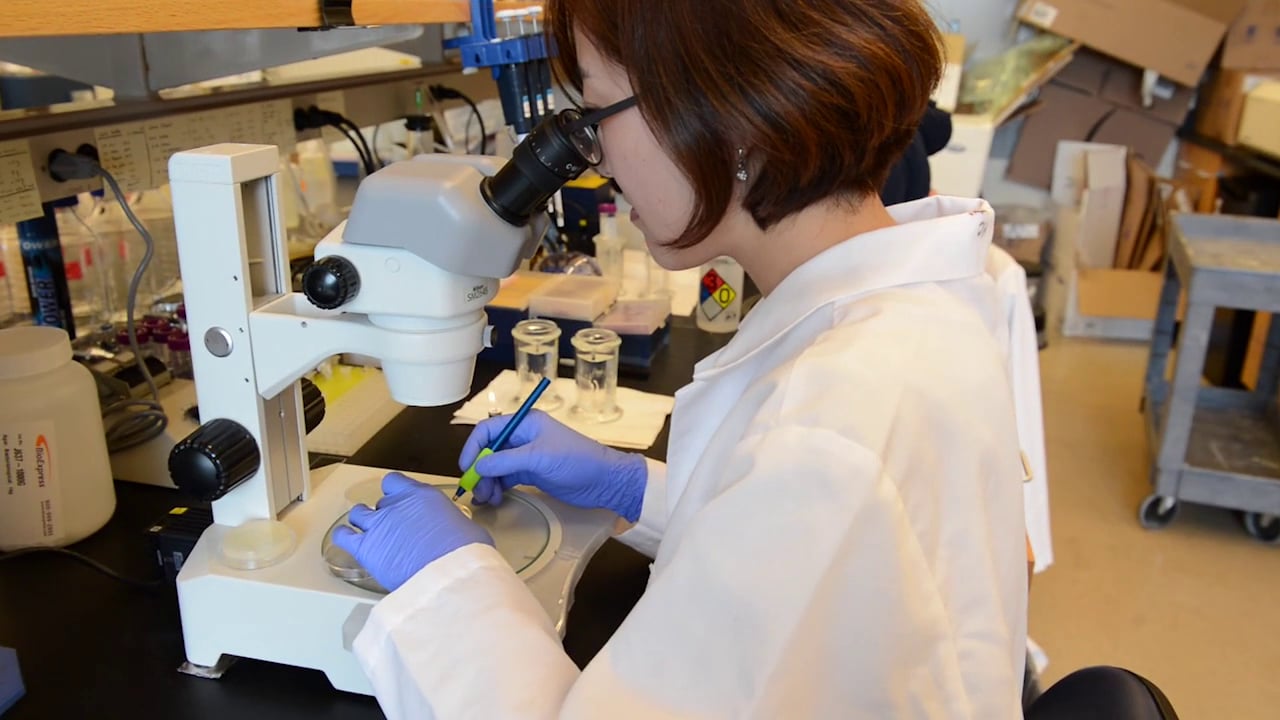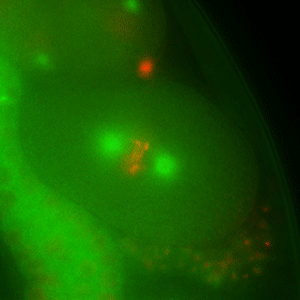
From shampoos to food storage containers to pesticides, we touch, ingest and breathe chemicals every day. Despite their ubiquity, the effects of these substances on human reproductive health are largely unknown.
With thousands of chemicals to test, how can researchers quickly zero in on the ones most likely to cause harm?
Help has arrived in an unlikely form: tiny worms known as Caenorhabditis elegans.
In 2013, the lab of Monica Colaiácovo, professor of genetics in the Blavatnik Institute at Harvard Medical School, developed a screening method that flags when a worm’s exposure to a chemical leads to abnormal numbers of chromosomes in its eggs.
In people, such chromosomal abnormalities cause more than 35 percent of miscarriages and 4 percent of stillbirths as well as infertility and conditions such as Down syndrome.
C. elegans share more than 60 percent of their genes with humans, and many discoveries in the worms have been replicated in mice and yielded new insights into cellular processes in humans, making them a standard model organism for investigating biology.
In a new study published Feb. 14 in PLoS Genetics, senior author Colaiácovo and team used their worm screen to test 46 common pesticides, phthalates (substances used in many plastics, cosmetics and household products) and byproducts of crude oil processing and hydraulic fracturing, commonly known as fracking.
The screen delivered sobering results: 41 percent of the tested chemicals caused genetic disruptions in egg cells to an equal or greater extent than those caused by bisphenol A (BPA), a plasticizer under investigation for potential harm to fetuses and young children.
The effects included an uptick in DNA damage in cells destined to become eggs, a rise in egg death and a drop in the number of eggs laid.
Among the flagged chemicals was DEET, the most common active ingredient in insect repellents.
Chromosome disruption in egg cells is the canary in the coal mine. This may not be all these chemicals are doing.
Monica Colaiácovo
HMS professor of genetics






